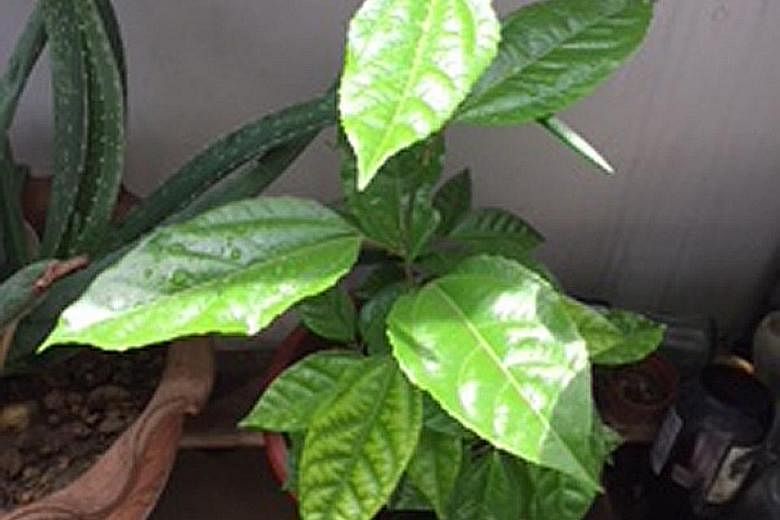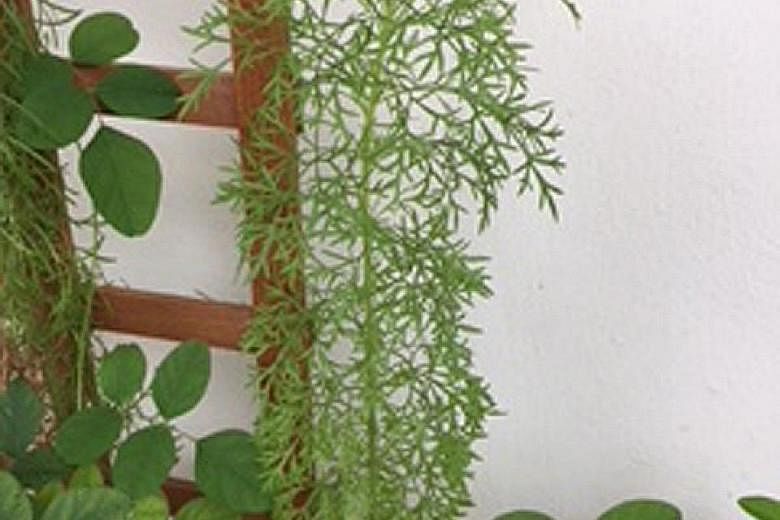Plants in small pots dry out quickly
My balcony gets strong afternoon sun and I am having trouble keeping the plants there vibrant and alive. I water them every morning. What kind of plants should I grow in my balcony?
Tan Soo Juan
Your plants appear to be grown in overly small pots.
Small pots hold a limited amount of soil and hence dry out quickly under sunny conditions.
Some plants have high water requirements and the limited water content in small pots will be either quickly taken up by the plants or evaporated under such situations.
There are also plants that need a larger soil volume to thrive. Hence it is recommended that you use appropriately sized pots to grow your plants.
Another alternative is to consider growing drought-tolerant plants such as cacti and succulents that thrive under direct sunlight for more than four hours daily.
But do note that not all cacti and succulents are suitable for growing in Singapore. It is important to select species that can thrive in a tropical climate with warm nights.
Plant grown from seeds likely to be passionfruit; dogfennel not for eating
I grew this plant from seeds, but I cannot remember what kind of seeds they were. What plant is this? Also, I have grown this dill from a stem cutting, but I am told it is not the real dill plant used for seasoning. Is this true?
Denise Wong
It is a good practice to label your plants when you sow seeds.
The plant on the left appears to be the passionfruit plant (Passiflora edulis). As the plant matures, the leaves may take on a lobed appearance. Do provide it with a support to climb on.
The plant on the right is commonly known as the dogfennel (Eupatorium capillifolium).
As mentioned in previous columns, this plant is not the dill (Anethum graveolens) that is used for cooking. The dogfennel is not recommended for consumption as it is reported to contain toxic elements, which can be harmful when eaten in large quantities or too frequently.
Pesticide may be burning leaves of maple tree
The leaves on my maple tree look diseased. The tree used to grow new leaves that were red. Many leaves soon developed spots and holes, and I even caught a very small, grey worm that looked like a caterpillar. I am using cypermac pesticide to treat the tree. It has been about two weeks, but it does not seem to be improving. I spray the leaves about once every three days. What else can I do?
Lau Wai Leong
It is difficult to ascertain the type of pest as there are no pictures of the worm.
The pesticide you have been using is cypermethrin, which is a contact pesticide. It can become ineffective because it can be washed away by rainwater. Exposure to sunlight can also break down the pesticide.
You may want to consider using a systemic pesticide which gets absorbed into the plant's vascular system. Systemic pesticides tend to have longer-lasting effects.
The maple tree comes from a different climate and growing it in tropical Singapore can be difficult. The tree can be stressed and hence prone to attacks from pests and diseases. Spraying pesticides to manage the problem is not a sustainable practice and can be harmful to your family, environment and eco-system.
From the picture of the leaves, there seems to be burn marks due to phytotoxicity from the pesticide applied. It is recommended to spray pesticides during the cooler part of the day.
Also, always follow the instructions on the label on how to dilute the pesticide and the frequency of use. Overly frequent applications and higher-than-normal doses can burn the foliage of plants.
Start with a small edible garden
I am interested in growing vegetables at home. I live on a landed property, but because the soil is not good, I am considering growing vegetables in trays on a frame. Is this feasible?
Marianne Koh
For situations such as yours, setting up raised beds or growing plants in large troughs, with a soil depth of at least 20cm, is a possible option. This way, you can concoct the appropriate soil mix for growing your desired edible plants.
As with most edible plants, they need at least four hours of direct sunlight daily for robust growth. The soil needs to be fertile, well-drained and moisture-retentive.
My advice to new gardeners is to start small so that the set-up cost and commitment are low and manageable.
Avoid starting a big garden as edible plants, in general, require more work to grow them well.
•Answers by Dr Wilson Wong, a certified practising horticulturist and founder of Green Culture Singapore (www.greenculturesg.com). He is also an NParks-certified park manager.
•Have a gardening query? E-mail it with clear, high-resolution pictures of at least 1MB, if any, and your full name to stlife@sph.com.sg




